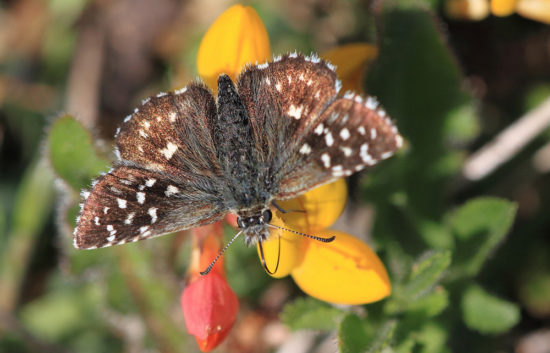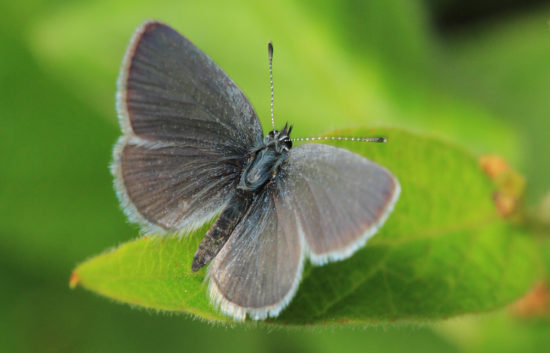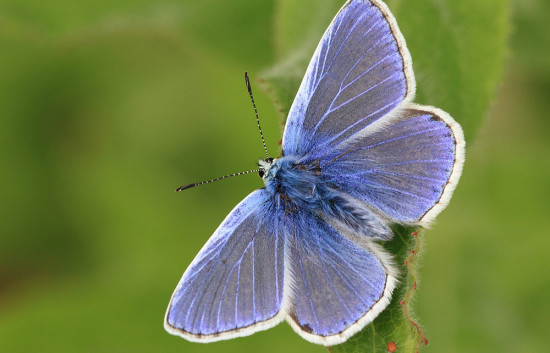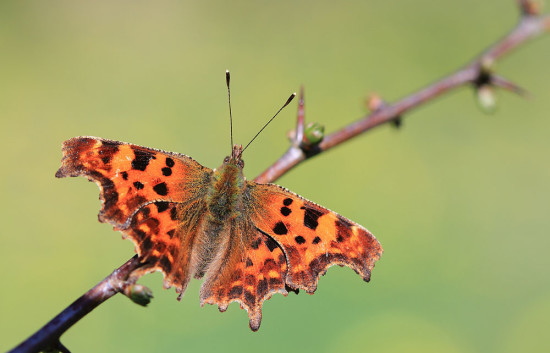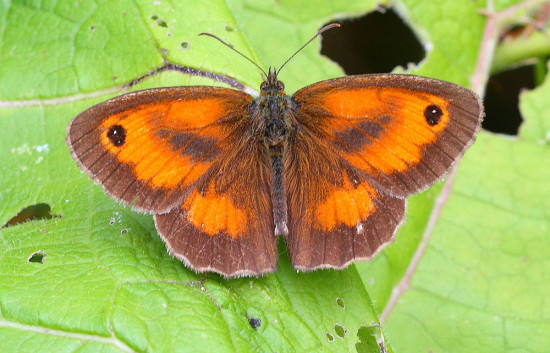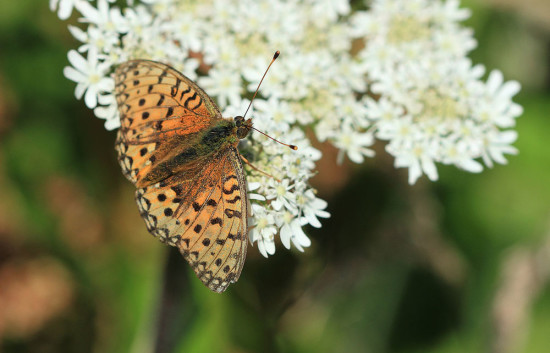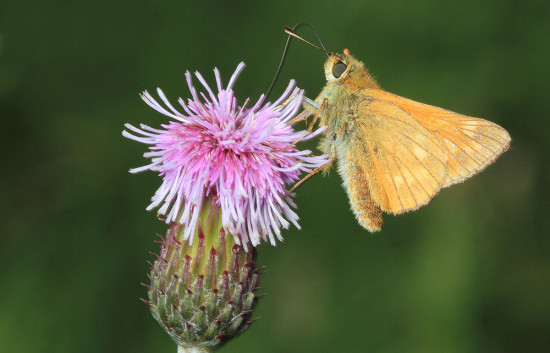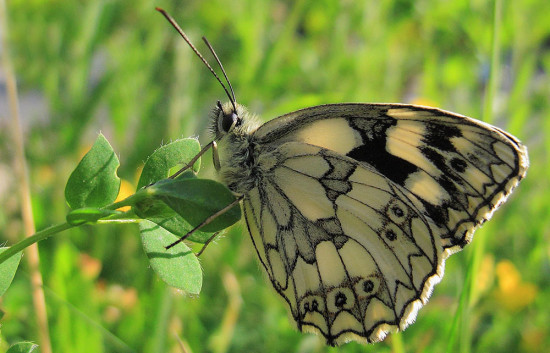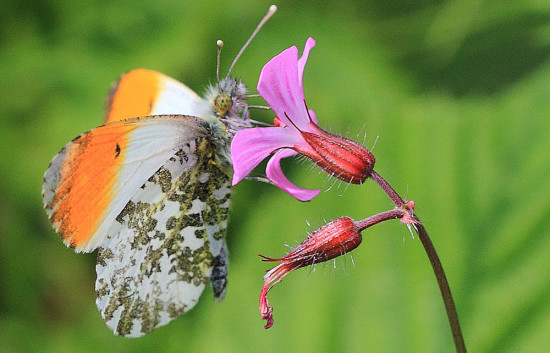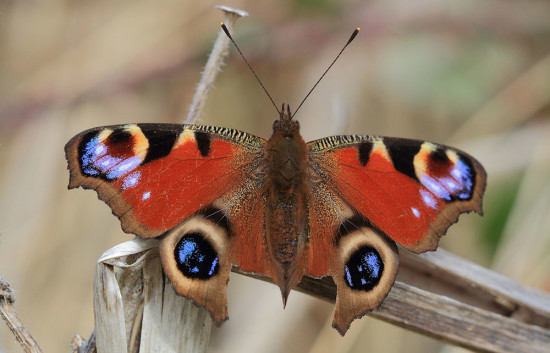On a hot day in late May found on patches of bare ground where Wild Strawberries grew. Tiny and rather moth-like, this skipper was readily identified by its pattern of white chequers on dark wings, The male and female are...
Our smallest butterfly, its dainty appearance and rounded wings with silvery-blue undersides. These are dotted with black, lacking the orange found in most blues and more resembling a tiny Holy Blue. The upperside is blue in the male, unlike the...
Pic 1: As with all butterflies, the eye catching wings of the Common Blue derive from minute scales arranged in overlapping tiles across both surfaces of each wing. As Jeremy Thomas explains: ‘the colours are produced in a combination of...
Pic 1: This perching Comma is eagerly awaiting the arrival of a female. There were plenty of Tortoiseshells to contend with but this plucky little fellow wasn’t ready to give-up his territory without a good fight. Adult Commas can be...
Every five-years or so, Butterfly Conservation and its partners publish a ‘state of the nation’ assessment of the UK’s butterflies. These influential reports set out the key results for butterfly species, highlight the implications of recent research and policy initiatives,...
One of the most endangered and rapidly declining butterflies, restricted almost entirely to western Britain, from the Lake District south to Dartmoor. This particular specimen was captured in Kenfig Nature Reserve, Bridgend, South Wales. There are thought to be fewer...
Pic 1: This butterfly favours grassy areas, where food plants like this Meadow Thistle, grow in sheltered, often damp, situations and remain tall and uncut. Pic 3 & 4: Having selected a suitable spot, a male chooses a flat leaf...
While on a trip from Birmingham to London I stopped at a service station on the M40 just outside Oxford. I was on a business trip so didn’t have the 7D or the 40D, however I always take the G12...
Pic 1: The Orange-tip does not form discrete colonies but wanders in every direction as it flies along hedgerows and woodland margins looking for a mate, nectar sources or food plants. Captured feeding on Red Campion (Silene dioica) in Porthkerry...
Perhaps a more appropriate name for the beautiful Peacock butterfly would be the ‘Owl’ – for if you rotate the view of the adult upside down you will notice that the twin hindwings assume the image of a Little Owl...

